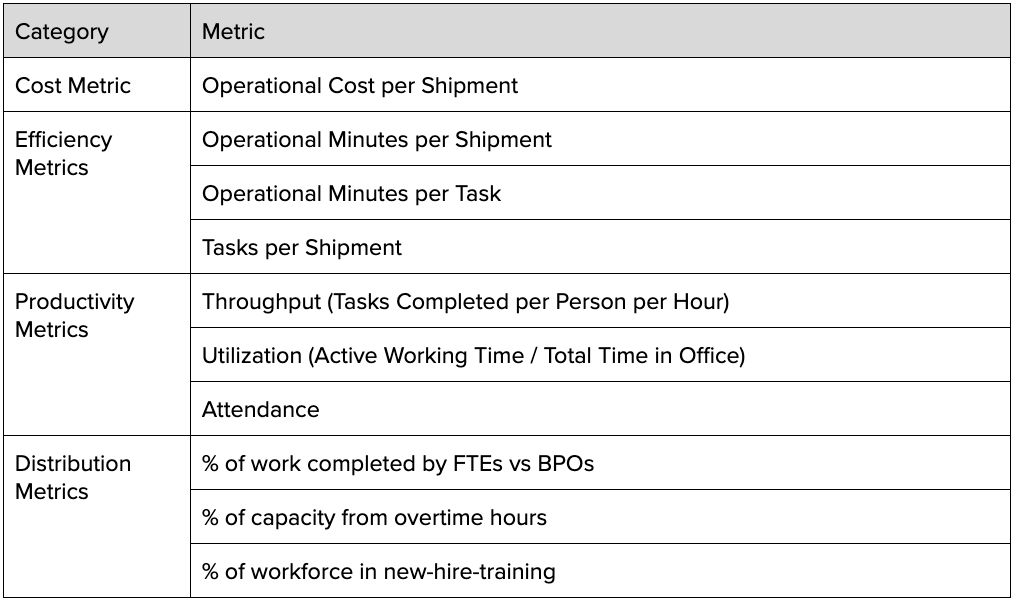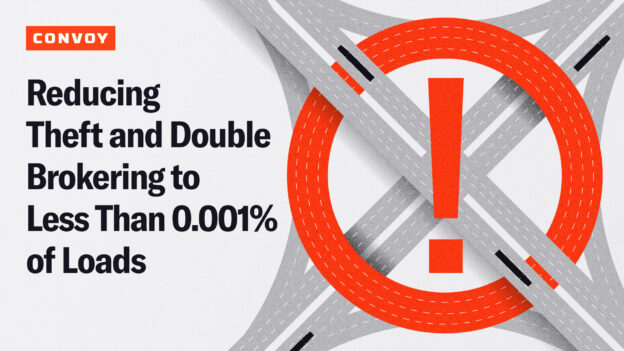How is my operations team doing? Steps to building a well balanced scorecard.
Shippers • Published on October 15, 2020
In this article, we’ll explore how to create a well-balanced set of operational metrics that you can implement in your own business.
Like all businesses, Convoy has many stakeholders with different priorities.
- Shippers care about trucks being on time, good communication, and fair prices.
- Carriers also care about fair prices, strong relationships, and access to shipments that form complete routes.
- Employees care about fair wages, reasonable working hours, and having a supportive workplace that allows them to grow.
- Employees and investors also care about revenue growth, profitability, and a promising future.
Many of these can be categorized into two high-level buckets: cost and service.
Both are equally important to have a viable business. You need to provide exceptional service to retain customers, but you also need to maintain low internal operating costs to have a viable business over the long term.

In the next section, we’ll take a look at some of the service and cost metrics that Convoy measures.
Service Metrics
The operations team at Convoy is responsible for scheduling appointments before the shipment is posted to the load board. Once the shipment is in progress, the operations team is responsible for communicating with the shipper and carrier to resolve any issues during the shipment. Below is a list of key metrics that the Convoy operations team measures to ensure we meeting or exceeding the expectations of our customers:

Cost Metrics
To ensure we are running an efficient and profitable business, we need to measure the cost of our internal operations.
In its simplest form, the “Operational Cost per Shipment” metric can be compiled using two pieces of data: total operating costs per week and total shipments per week.

While “Operational Cost per Shipment” serves as the top-line cost metric, it’s also important to create a set of supporting metrics that allow you to understand what is driving cost up or down.

Now that we’ve walked through a big list of metrics, let’s turn it into action:
How many metrics should you build?
If you build too many metrics, then your team won’t know where to focus their energy or what metrics matter most. If you build too few metrics, then your team may over-index on one metric without thinking about balancing the scale.
Start small with just a few metrics, but create metrics that counter-balance each other.
Why is it important to have counter-metrics?
If you don’t set counter metrics, then you risk managing too much to one metric and missing how it’s impacting other areas of your business. In other words, you create blind spots.
Building a Culture of Continuous Improvement
Once you’ve built your metrics and dashboards, the most critical step is to create a routine. Assign owners to metrics that will be held accountable for conducting deep dives. Set up daily, weekly, and/or monthly business reviews that will create a routine around reviewing performance.
Data for the sake of having data is useless. Data turned into action is invaluable.
Short Case Study
Here’s an example of Convoy’s cost-per-shipment in March of 2020. As you can see, volume increased, causing cost per shipment to decrease. If we just look at cost, this looks great! But if service is also dropping at the same rate then we’re failing our customers.
By tracking volume, cost, and service side-by-side, we were able to keep close eyes on service metrics. To ensure that service was not negatively impacted when volume increased, we quickly pivoted our processes, allowing us to maintain the same level of service at a lower operating cost. Now that’s a win!




